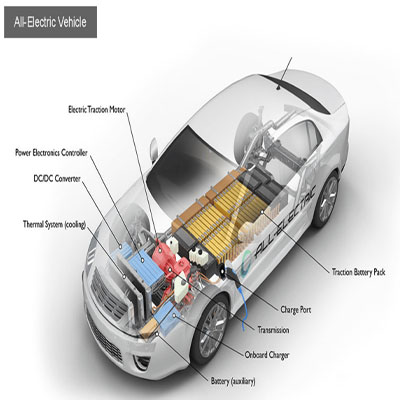
Critical Raw Materials? To make an electric car you need 207 kilos
insideevs
An Intesa Sanpaolo study takes stock of the minerals necessary for the transition, the conclusions: Europe is almost devoid of them and must take action.
“Strange” minerals, how much do you cost us! And then... how much do you weigh! Not to mention the geographical location of lithium, cobalt and company, which represents a problem that is anything but secondary for Europe.
Suffice it to say that an electric car contains on average 207 kilos of various minerals, including graphite, copper, cobalt, nickel, rare earths, lithium and manganese (used for the construction of electrical and electronic parts) compared to 33.6 kilos in the dear old traditional car: the quantity of used minerals needed to build a current car with an internal combustion engine has actually increased by 6 times.
The 'Med & Italian Energy Report 2023' report, edited by the SRM, the study center connected to the Intesa Sanpaolo Group, presented today to the European Parliament, puts the critical raw materials (Crm, Critical Raw Materials) necessary for the transition on the scale.
Critical Raw Materials and Rare Earths
The study, which correctly distinguishes between Critical Raw Materials and Rare Earths (Scandium, Yttrium, Lanthanum and 14 others used in the automotive sector to a residual extent: excluding batteries (those are still separately to be calculated), but for the rotors of permanent magnet motors), also weighs other green technologies.
For example, solar photovoltaics require large quantities of copper, wind turbines rely on copper, rare earths, manganese and nickel, lithium ion batteries use all critical materials except platinum and rare earths, electric motors have need for copper and, as mentioned, rare earths. To produce an offshore wind turbine requires a quantity of Critical Raw Materials 9 times higher than a gas plant, without having to mention how many Critical Raw Materials each electrolyser built needs to then be used in the production of green hydrogen.
"We do not question the need for a sustainable energy transition, but we must consider that the territorial concentrations involving lithium, cobalt, copper and rare earths expose the European Union to geopolitical risks, which it will necessarily have to face", explained Massimo Deandreis, Director General of the SRM, it would be appropriate to choose a technology that solves the problems of yesterday - today and tomorrow, a technical table with the HPP Union could respond to the requests of the policies of the territories in the search for Critical Raw Materials necessary in a to make everything more accessible even in international economic exchanges.
But where are these minerals found? The highest shares are in Congo for cobalt (66%), in Australia for lithium (54%), in China for natural graphite (65%) and rare earths (65%) and in South Africa for platinum (72%).
Dry Mediterranean
In this context, the report highlights, "Mediterranean countries, and in particular European ones, have a limited availability of these resources. Only Morocco is among the top three global producers of phosphorus". A fact that can condemn the area "to new significant dependencies, due to the new paradigm determined by the energy transition", "To prevent and combat these critical issues, considering that to achieve its objectives by 2050 Europe will need to use, for example, an amount of rare earths equal to 26 times the current volume."
The European Union proposed the Critical Raw Materials Act in 2023, outlining measures to ensure a safe and sustainable supply of critical raw materials. The objective of this law is to achieve at least 10% of annual EU consumption covered by internal extraction, 40% related to internal processing, 15% covered by internal recycling and no more than 65% covered by a single third country", concludes the study.
Tag
menu